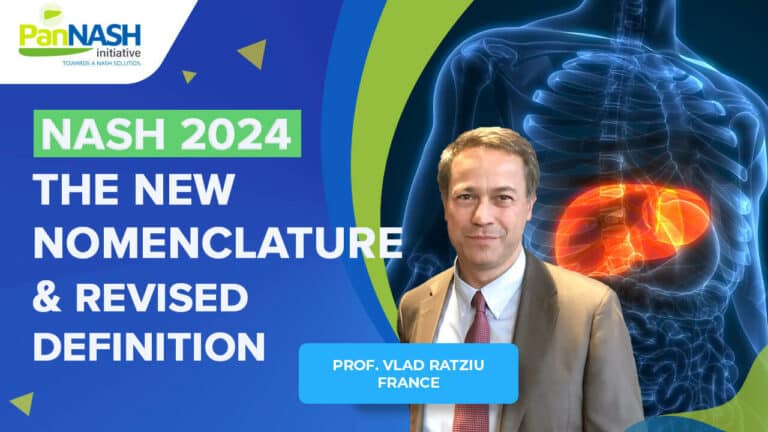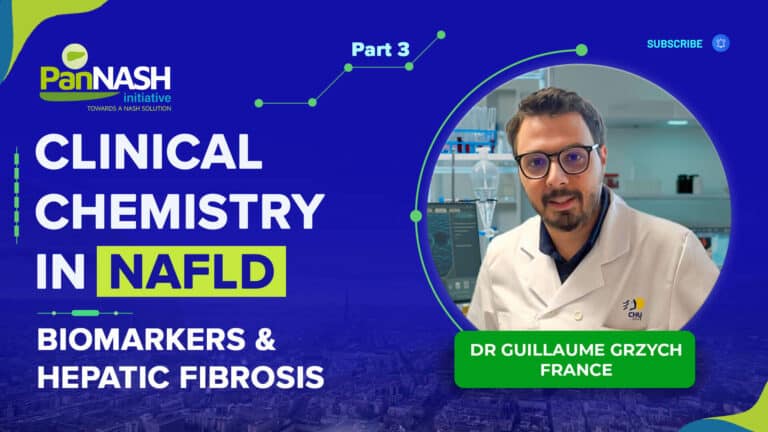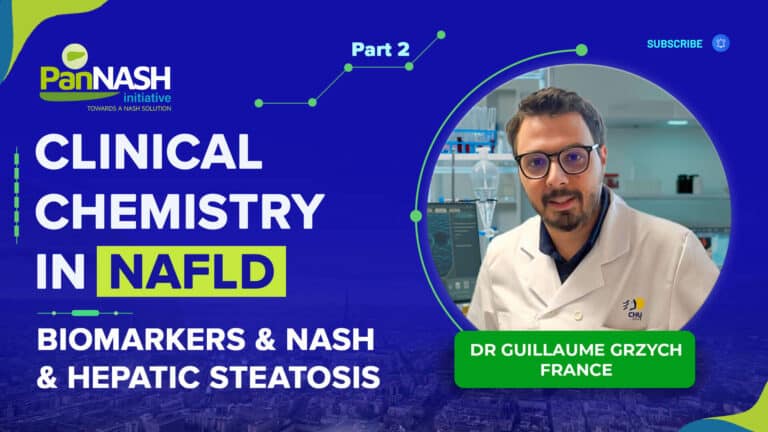INTRODUCTION ABOUT DR. Giada Sebastiani
Dr. Giada Sebastiani is an Associate Professor of Medicine at McGill University Health Center in Canada with a research focus on non-invasive diagnosis of non-alcoholic fatty liver disease NAFLD and liver fibrosis staging.
She has been actively involved in the quest for the optimal biomarkers for NASH and has provided valuable insights on the challenges and opportunities in this field.
Dr. Sebastiani has published numerous research articles and editorials in high-impact journals, including the editorial of The Lancet Gastroenterology and Hepatology regarding the first results of the Litmus project that she will comment on.
OVERVIEW OF The Odyssey for a Versatile NASH Biomarker
Discover why the perfect NASH biomarker doesn’t exist and why a versatile biomarker may be more beneficial. Learn how fibrosis may be a viable diagnostic classificator for NASH and how the complex pathogenesis of the non-alcoholic fatty liver disease (NAFLD) accounts for its link with extrahepatic manifestations.
Table of Contents
- Introduction
- The Rationale for the Quest for a NASH Biomarker
- Challenges in Histological Diagnosis of NASH
- Why Fibrosis May be a Viable Diagnostic Classificator for NASH
- Why the perfect NASH biomarker doesn’t Exist
- The Need for a Versatile Biomarker
- Insights and recommendations for non-invasive diagnosis of NASH: guidance from Dr. Giada Sebastiani
Introduction
Non-alcoholic fatty liver disease (NAFLD) is a prevalent chronic liver disease affecting 25% to 30% of the general population worldwide. NAFLD can progress to non-alcoholic steatohepatitis (NASH), which is characterized by inflammation, hepatocyte ballooning, liver fibrosis, and hepatic steatosis. NASH can lead to significant complications, including cirrhosis and liver transplants.
As a result, the quest for non-invasive biomarkers for NASH is crucial to identify patients at high risk for developing end-stage complications and including them in ongoing clinical trials.
The Rationale for the Quest for a NASH Biomarker
The subtleness of NAFLD and NASH makes diagnosis and identification of high-risk patients challenging. A significant proportion of NASH patients are diagnosed only when they develop end-stage complications related to cirrhosis, including variceal bleeding, ascites , or liver cancer.
Only a proportion of individuals with NAFLD progress to NASH with clinically significant fibrosis – these are the patients who will develop end-stage complications.
Moreover, the diagnosis of NASH as a whole represents a challenge due to the lack of non-invasive tests to identify hepatocyte ballooning and necroinflammation.
Challenges in Histological Diagnosis of NASH
NASH is diagnosed through histological changes such as:
- inflammation
- hepatocyte ballooning
- liver fibrosis
- hepatic steatosis
Steatosis is necessary for diagnosing NAFLD, the base of the diagnosis, while fibrosis provides its prognosis.
While non-invasive tests for steatosis and fibrosis have good accuracy, diagnosing ballooning and necroinflammation non-invasively is more problematic. This is due to the variability of their definition, even among experienced pathologists or clinicians, specifically for hepatocyte ballooning.
Why Fibrosis May be a Viable Diagnostic Classificator for NASH
Despite the challenges, Dr. Giada Sebastiani suggests that fibrosis may be a viable diagnostic classification tool to identify people at risk for clinical outcomes.
Fibrosis provides the prognosis of NAFLD, and non-invasive tests for fibrosis have good accuracy. Fibrosis may also provide a simpler endpoint for NASH-targeted clinical trials.
Why the perfect NASH biomarker doesn’t Exist
Dr Sebastiani believes that the perfect NASH biomarker does not exist. Even in the best-case scenario, non-invasive biomarkers are tested against liver histology, which is an imperfect gold standard due to:
- intra- and inter-observer variability;
- sampling error;
- sub-optimal representability of the liver;
- with a sample that is only two centimeters in length for a large organ;
Previous studies have shown that even under the best circumstances, the perfect biomarker will not achieve diagnostic performance over 0.90, as represented by the area under the curve due to the limitations of the gold standard.
The Need for a Versatile Biomarker
Dr Sebastiani highlights that a versatile biomarker may be more beneficial in the quest for a non-invasive diagnosis of NASH. The crosstalk between the liver and extrahepatic organs is a specific characteristic of NAFLD.
Fatty liver is associated with several extrahepatic diseases, including cardiovascular disease, chronic kidney disease, sleep apnea, osteoporosis, thyroid disease, and polycystic ovary syndrome.
NAFLD is mediated by metabolic abnormalities or several extrahepatic diseases, such as insulin resistance, a key player in the pathogenesis of NASH, and several complications.
The complex pathogenesis of NAFLD accounts for the link with all these extrahepatic manifestations, some of which drive morbidity and mortality in patients with NAFLD, such as cardiovascular disease.
A versatile biomarker could also focus on systemic and local inflammation, pro-inflammatory cytokine production, oxidative stress, and dysfunctional adipose tissue linked to triglyceride accumulation.
Insights and recommendations for non-invasive diagnosis of NASH: guidance from Dr. Giada Sebastiani
In conclusion, the quest for non-invasive biomarkers for NASH remains an ongoing challenge. While non-invasive tests for steatosis and fibrosis have good accuracy, diagnosing ballooning and necroinflammation non-invasively is more problematic.
The perfect NASH biomarker does not exist due to the limitations of the gold standard for liver histology.
However, fibrosis may be a viable diagnostic classificator for NASH and may provide a simpler endpoint for NASH-targeted clinical trials. A versatile biomarker may also be more beneficial in the quest for non-invasive diagnosis of NASH, considering the complex pathogenesis of NAFLD and its link with extrahepatic manifestations.
Overall, the insights and recommendations from Dr. Giada Sebastiani offer valuable guidance for researchers and clinicians in the field of NASH diagnosis and management.




